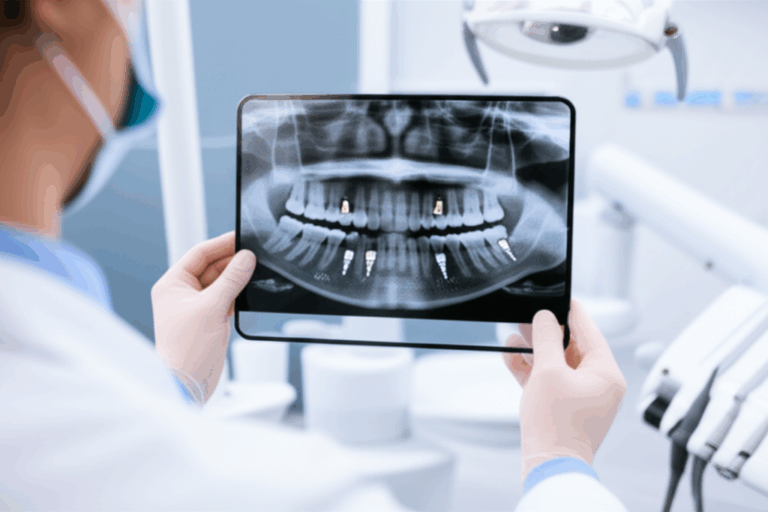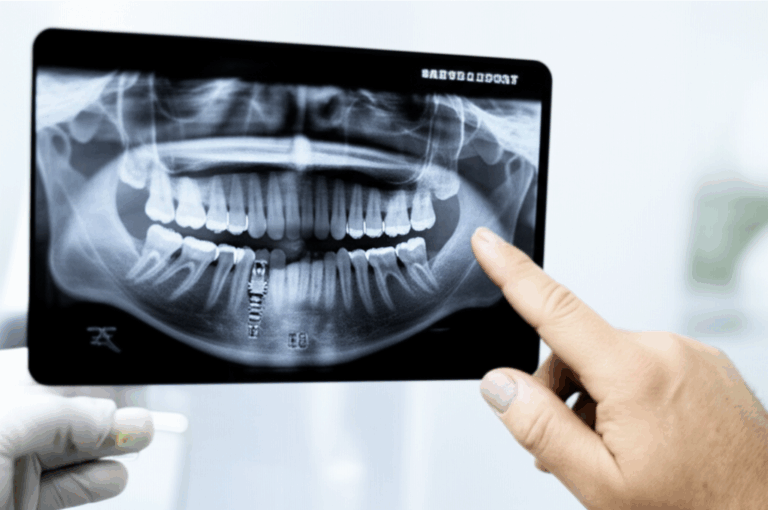
Can Dental Bone Graft Cause Health Problems
If you’re thinking about getting a dental bone graft, you might be worried about possible health problems. This article will explain what bone grafting is, why it’s needed, and if there are any real dangers. I’ll share what I know so you can see what to expect and make good choices about your dental care. Take a few minutes to read—it’s always good to look after your health.
Article Outline
- What Is a Dental Bone Graft?
- Why Would You Need a Bone Graft?
- How Safe Is the Procedure?
- Can Dental Bone Grafts Cause Health Problems?
- What Are the Most Common Risks?
- Can Infection Happen After a Bone Graft?
- What About Allergy or Rejection?
- How Does Graft Material Type Matter?
- What Steps Reduce the Risks?
- Are Dental Labs Important for Safety?
- What Should You Watch for After a Bone Graft?
- Is The Benefit Worth The Risk?
- Key Takeaways
What Is a Dental Bone Graft?
Let me start at the beginning. Simply, a dental bone graft is when your dentist adds extra bone (or a material that acts like bone) to your jaw. Why do this? It helps support dental implants or replaces bone you’ve lost from gum problems or injuries. It might sound fancy, and really, it is kind of modern. Today’s dental treatments use cool tools like what you see in a 3d dental lab or special zirconia labs.
Before my first bone graft, I thought it would be like something out of a scary hospital show. But for most people, the dentist uses a small piece of real or fake bone, puts it under your gum, and lets your body heal itself. Over time, the graft helps your jawbone get thicker or stronger so it can hold your teeth or implants.
Why Would You Need a Bone Graft?
You might wonder, “Why do this at all?” Maybe your dentist told you that bone around a tooth is missing. Or you want a dental implant, but your jaw isn’t thick or strong enough. This is when a bone graft can help—think of it like fixing a weak foundation before building a house. Even after losing a tooth for a long time, your bone gets smaller, so a bone graft helps build it back up.
Sometimes, more help is needed. Maybe you had an infection, accident, or gum disease. Instead of just a quick fix, a bone graft gives your mouth a strong base for long-term repairs. After years of talking with people who thought, “Nothing can be done,” I can say bone grafts can really help get your smile back.
How Safe Is the Procedure?
It’s totally normal to feel nervous before these treatments. I’ve sat there too, fidgeting and thinking, “Is this really safe?” You can relax, though—most dental bone grafts are standard and very safe. Dentists and dental surgeons are trained for this work. They use really good materials—sometimes from top-quality china dental labs or known emax dental labs.
The way they do these has gotten much better over time. With digital scans and 3d dental lab setups, your jaw is checked carefully before anything starts. Still, no procedure is totally without risk. Managing these risks is important, and I’ll explain how.
Can Dental Bone Grafts Cause Health Problems?
This is the big question. Yes, dental bone grafts can have health problems, but it’s not common. Most people heal just fine. Sometimes, problems do happen—sometimes small, sometimes more serious. These problems include infection, swelling, or if the bone graft doesn’t work right.
If you don’t know the risks, you could miss a small problem that should be treated soon. Or, you might skip the procedure, even when it could help you. It’s important to see both the risks and all the good results I’ve seen myself.
What Are the Most Common Risks?
There are a few problems that show up more often than others. First, pain or swelling—nobody likes those, but they’re part of healing. You might see some bruises, some bleeding, or feel sore. That’s normal, and it usually goes away in days. Bigger problems are infections, or if the new bone does not join to your jaw.
In the long run, you might have nerve pain, sinus problems (if your graft is near your upper jaw), or bone loss if your body reacts badly. All this can sound scary, but these problems aren’t common. Most of them happen when people skip their aftercare steps or have health problems that weren’t found before treatment.
Can Infection Happen After a Bone Graft?
Yes—a bone graft is still a kind of small surgery. When your gums are opened up, you can get an infection. I remember one patient who didn’t feel right a week after their bone graft—the gums were swollen, had a slight fever, and the area wasn’t healing well. It ended up being a sneaky infection starting to grow.
Infections can stay light or, if ignored, get really bad. Look out for pain getting worse (not better), pus at the site, a bad smell in your mouth, or a fever. It’s kind of like cleaning up a spill in your kitchen fast—it’s always better if you catch infections early so they don’t turn into a big health problem.
What About Allergy or Rejection?
This can be tricky. Sometimes, whatever is used in your bone graft sets off your body’s alarm system—it acts like it’s fighting something that doesn’t belong. That can make the graft fail. Allergic reactions to lab-made materials are pretty rare, but they do happen. If they use real bone from another person, allergies are not common, but it’s still possible.
If this happens, you may see redness, bad pain, or swelling that just won’t go away. Rarely, the area won’t heal or your body “eats up” the new bone instead of using it to rebuild. That’s why it’s really important to talk about any allergies with your dental team before you begin.
How Does Graft Material Type Matter?
I’ll try not to get too science-y. There are four main types of bone grafts: your own bone, bone from someone else, bone from an animal, and lab-made (synthetic) materials. Each kind has good and bad points. Your own bone almost never causes rejection, but it means another spot on your body has to heal. Fake materials from a china dental lab or emax dental lab are very exact, but they don’t always have the natural “growth stuff” found in real bone.
I’ve seen people do well with all these, as long as the right choice is made. Your dentist will look at your health, allergies, and dental needs, then pick what’s best for you. Don’t be afraid to ask where your graft comes from, and make sure it’s right for you.
What Steps Reduce the Risks?
Here’s the basics: be ready before any problems start. First, tell your dentist about all your health issues. Are you diabetic? A smoker? Allergic to anything? The more they know, the safer your treatment will go. Next, work with a dentist who gets their materials from a reliable china dental lab or a trusted zirconia or 3d dental lab.
After your bone graft, follow all instructions. Rinse your mouth as told, don’t poke at the spot, and take any medicine the way you were told. If anything feels strange, don’t wait or guess—call your dentist. Finding a small problem early keeps it from turning into something worse.
Are Dental Labs Important for Safety?
For sure—the quality of the lab isn’t just a small thing. It’s like eating food from a clean kitchen or a messy one. It’s the same with labs. If your graft or implant is made in a quality zirconia lab, that means better safety and fewer problems with healing or infection.
3d dental labs make it even better. They can make the pieces fit your mouth perfectly, so you have fewer surprises in surgery. Emax dental labs are known for really strong, safe materials that work well with your body. So, always ask where your bone graft parts come from. Don’t accept unsure answers.
What Should You Watch for After a Bone Graft?
After your bone graft, you still have a job to do. Watch the area: is the swelling getting better? Do you have strange pain, odd colors, or pus? Are you feeling sick, tired, or just off? These are the warning signs. Call your dental team right away if you notice anything wrong.
For the first week, you’ll need to eat soft foods and not brush directly on the graft area. Don’t chew on that side, and avoid using straws—even small things like this can cause bigger issues. Remember, seeing your dentist for check-ups means they can fix a problem fast if one comes up.
Is The Benefit Worth The Risk?
This is something you’ll have to think about. Are you more worried about the risks than the good results? After seeing many people go through this, I can say bone grafts are mostly safe—and can totally change things for people who need their teeth or dental implants to stay put.
Of course, there’s always a small chance of health issues, just like with any surgery. But if you skip treatment when you really need it, you might end up with even bigger problems—like losing more bone or having trouble with dental pain for a long time. Learn as much as you can, pick a good dentist, and most risks are very small.
Key Takeaways
- Dental bone grafts help fix lost bone and make dental implants possible.
- Most bone grafts are safe if done by trained dentists using good lab materials.
- Problems are rare, but you can get infection, graft failure, or allergies.
- Good dental labs (china dental lab, zirconia lab, emax dental lab, 3d dental lab) make a big difference for safety.
- Following aftercare steps is your best way to avoid problems.
- If you get a fever, swelling, or odd pain after a graft, call your dentist.
- The benefits of bone grafts are usually greater than the risks—especially if you need a dental implant.
- Don’t let fear stop you; good dental work can really improve your health and confidence.
- Always tell your dentist about your health history and allergies before any dental graft work.
- Quality materials and skill matter a lot; always ask questions if you’re unsure.
Take charge of your dental care, think through your choices, and you’ll keep both your health and your smile in good shape.








